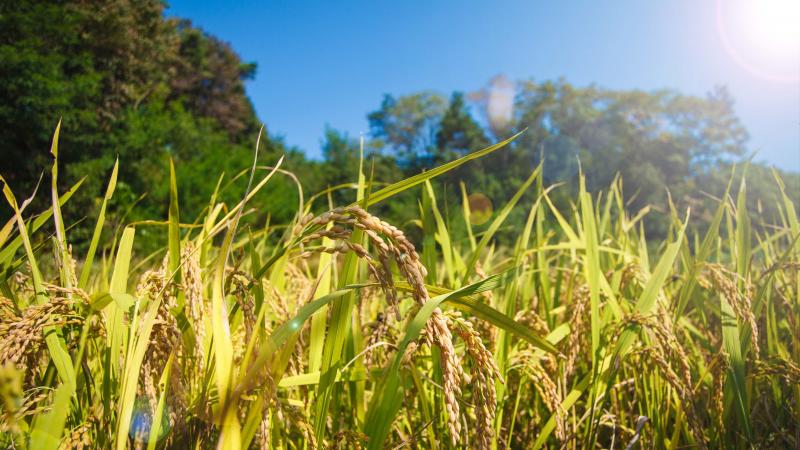
Tiny RNA lost during domestication created robust rice varieties, shows study.
Today, rice is the most widely consumed staple food in the world, feeding more than half of the world’s population. We have nothing but a tiny piece of RNA, or ribonucleic acid, to thank, for the mouthfuls of rice we eat! In a recent study, published in the journal The Plant Cell, researchers from the National Centre for Biological Sciences, Bengaluru, have found that a particular microRNA (miRNA) is the reason we have been able to cultivate rice and harvest greater yields of the grain today. The study was funded by the Department of Science and Technology, Department of Biotechnology and the Department of Atomic Energy through Tata Institute of Fundamental Research (TIFR).
The domesticated rice varieties of today have come a long way from their wild ancestors, which were a little better than wild grass. Wild rice produces very few grains that often fall off to the ground on their own. The domesticated rice varieties, on the other hand, are short and erect with more grains that remain in the crop until harvest. The current study shows that it is due to an accidental loss of a microRNA, named miR397, during the course of breeding. When this miRNA is absent, higher amounts of a material called lignin is deposited in the stem of the plant. Lignin, which is found in abundance in the woody plants, lends support and rigidity to the plant, helping easy harvest of the grains without spilling them on the ground.
For their study, the researchers selected ten different varieties of rice, including two high-yielding varieties, six commonly domesticated varieties and two wild ancestors. When they correlated the visible differences in characters of these varieties with their genetic differences, they found that some of these differences could be attributed to the changes in how the genes are switched on or off, known as gene expression, rather than changes in the genes.
Expression of a specific gene, or a group of genes, is controlled by a particular miRNA, tailor-made to target them. When genes are 'expressed', they produce proteins needed to bring out a trait, such as the shape of the grain. They do so by making a copy of themselves, called the messenger RNA(mRNA). MicroRNAs, on the other hand, do not code for any gene and instead seek out specific mRNAs and bind to them by hydrogen bonds. These bound mRNAs are either fated to be destroyed or suppressed from producing any proteins, by other proteins in the cell.
The researchers extracted and compared miRNAs from the selected varieties and found that a particular miRNA was present in significant quantity in the wild type, but was absent in the other domesticated ones. They pinpointed its location to one of the chromosomes and identified it as miRNA miR397. This miRNA is thought to have evolved recently only in the rice genus. It targets mRNAs that produce a group of enzymes called laccases. When laccases are blocked, the production of lignin is suppressed.
“Lignin provides mechanical strength to rice stems and panicles. Wild species, which are found in semi-aquatic spaces like the shores of ponds and streams, have less lignin since water supports them. They don’t need to produce many grains for human consumption”, says Dr P V Shivaprasad from NCBS, who headed the study. Somehow, this miRNA was lost in the subsequent domesticated varieties, allowing for higher production of lignin and making them stronger and robust.
The researchers also observed that this gene suppression is amplified and fortified by an enzyme not usually found in plants. This enzyme makes copies of miRNA pieces broken off from the target mRNA, which further seek more mRNAs to bind and destroy them. This amplification leads to a powerful suppression of gene expression.
To cap it all, when miR397 was expressed artificially in the domesticated varieties, they appeared sickly with weak stems and other characteristics, proving how important it was to lose this RNA altogether in the evolution of domesticated varieties. With one fine stroke, they were instantly de-domesticated!
“Rice breeders can use the microRNA we found as a molecular marker (identifier) for enhancing yield. Also, this is a good candidate for genetic engineering for further development of the crop”, remarks Dr Shivaprasad. A growing population such as in India needs all the help to enhance the production of food grains and meet the food demands. Luckily, in the process of domestication, loss of a small miRNA has resulted in such significant differences, allowing scientists to hone this fact and improve the crop further.
